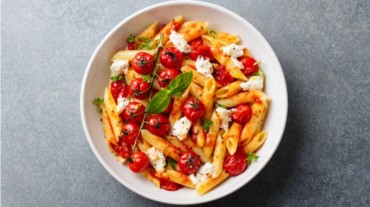Why do blood sugar levels rise after meals?
World Diabetes Day: If you have type 1 diabetes, you must routinely check your blood sugar levels before meals. We may not always think about what happens to our blood sugar levels just after eating. But it is rather common for everyone to experience brief spikes in their blood sugar post a meal.
Learning how to try to manage a rise in your blood sugar levels after meals may help improve your general health and wellness. This is because high sugar levels can cause symptoms such as thirst, fatigue, and a constant need to use the restroom.
Why is my blood sugar so high after eating?
It is common for people to have a brief jump in their blood sugar after eating a meal, especially if it contains carbs before the insulin generated in their bodies begins to work to decrease the surge. This is referred to as a post-prandial spike. These increases can be greater and stay longer in people with type 1 diabetes – who are unable to make their own insulin.
This is due to the fact that the insulin they inject (or receive via an insulin pump) may take longer to begin acting than the insulin that a person without diabetes would normally make in their body to lower these post-meal rises.
Furthermore, it is critical to understand that individuals with type 1 diabetes may have changes in various digestive enzymes, which will result in quicker digestion of our meals (resulting in the glucose reaching the bloodstream faster). This may also impact the spike’s magnitude.
How to control blood sugar spikes after eating?
Your future health will benefit if you spend more time in your goal blood sugar range, sometimes referred to as the ‘time in range’. This may be achieved by reducing these spikes. Since it may vary from person to person, you should speak with your healthcare provider to determine the optimal goal range for you.
In the near term, you should reduce the recurrence of high blood sugar level symptoms. At the same time, you should focus on increasing your energy levels, cognitive (thinking) and athletic skills, and general mood by avoiding prolonged high blood sugar readings after eating.
How can I tell if my blood sugar levels have risen?
Blood sugar spikes can occur at different times, depending on the individual and the food. However, the post-meal peaks often occur one hour and fifteen minutes after a meal has begun.
The use of a continuous glucose monitor or flash monitor are modern methods to determine post-meal trends, without the traditional finger-pricking method.
Here are some tips to reduce some of your post-meal blood sugar increases in magnitude and length. However, a word of caution: Please consult your healthcare team before adopting any of the following to determine whether it is appropriate for you.
1. Select foods with a low glycemic index ( GI)
Many food items in our diet, including white bread, rice, and the majority of breakfast cereals, have a high glycemic index, which causes glucose to be released into the bloodstream extremely quickly. We may avoid or flatten the blood glucose surge after meals if we choose low-glycemic-index foods such as oats, whole-wheat bread, pasta, and peas since insulin can function at the same rate.
2. Select the proper insulin at the appropriate moment
Compared to a person without diabetes, whose body makes its own insulin, which reaches the blood in only seconds, rapid-acting insulin may take up to 15 minutes to begin working.
The post-meal blood-sugar spile will be better managed by rapid-acting insulins than by ordinary insulin.
3. Schedule of injections
We are recommended to inject 15-20 minutes before to eating to reduce blood glucose increases since we inject insulin into fat located immediately beneath the skin (subcutaneous). Depending on the glycemic index of the food you will be eating and your pre-meal blood glucose reading, you may choose the time.
The last word
Keeping insulin levels within range involves a lot of focus, consideration and effort for someone with type 1 diabetes. However, it’s helpful to understand that rather than striving for blood glucose perfection, we can applaud our everyday efforts to maintain our health.
Analyze your daily food choices and how your body responds best to various meal kinds and insulin timings. Ask your diabetes team for assistance as you work through this at your own speed.
